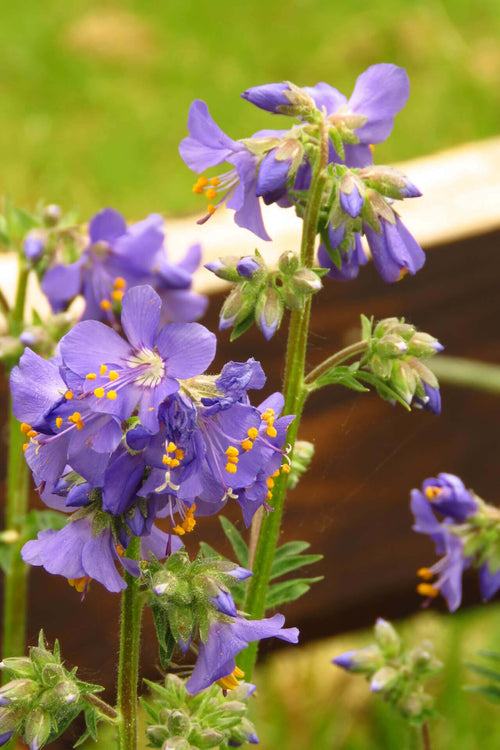Versatility of Northern Privets, Native Ferns, and Perennials for Privacy Hedges
Creating a lush and inviting garden involves carefully selecting plants that thrive in specific conditions and fulfill aesthetic and functional requirements. Shade borders, privacy hedges, and distinct plant varieties like Northern Privets, native ferns, and perennials are crucial in achieving a balanced and vibrant outdoor space.
Shade Borders:
The Beauty in Dimmed Light Shade borders offer a unique opportunity to transform areas of your garden that receive limited sunlight into enchanting, fabulous havens. Often overlooked spaces can be transformed into vibrant displays of foliage and texture. Shade-tolerant plants are the key players in these areas, as they are equipped to harness the available light efficiently. Native ferns and perennials are well-suited for shade borders due to their adaptability and enduring charm. Ferns, with their intricate fronds, bring a touch of elegance to these spaces. Their ability to thrive with little direct sunlight makes them an excellent choice for underutilized corners and along paths that wind through trees. Additionally, native perennials can be strategically placed to add color and texture to the shade border. Plants like hostas, astilbes, and heucheras can create a captivating interplay of shapes and hues.
Northern Privets:
Nature's Privacy Screen Privacy is a precious commodity in any residential setting. This is where the Northern Privet (Ligustrum x ibolium), a hardy and versatile shrub, comes into play. Native to Europe and Asia, the Northern Privet has become one of the most popular choices for privacy hedges. Its dense foliage, rapid growth rate, and adaptability to pruning make it an excellent candidate for creating green screens that shield your outdoor space from prying eyes. One of the critical advantages of Northern Privets is their ability to form a solid hedge quickly. Whether you're looking to create a secluded oasis or define the borders of your property, these shrubs can provide an effective solution. Regular pruning helps maintain the desired height and shape while encouraging lush growth. However, balancing routine maintenance and preserving the plants' natural beauty is essential.
Native Ferns:
Embracing Nature's Elegance Native ferns are a testament to the splendor of simplicity. Their delicate fronds unfurl in a graceful dance, instantly adding an air of sophistication to any garden. One of the compelling reasons to incorporate native ferns into your landscape is their ability to thrive with minimal intervention. These plants have evolved to thrive in specific ecosystems, making them low-maintenance additions to shade borders. As part of shade border plantings, native ferns can be positioned as focal points or used to create a harmonious backdrop for other shade-loving plants. Their varied heights and textures add depth to the garden while showcasing the beauty of nature's design. Popular native fern species include: The ostrich fern (Matteuccia struthiopteris). Lady fern (Athyrium filix-femina). Cinnamon fern (Osmunda cinnamomea). Incorporating these ferns enhances the shade border's visual appeal and contributes to the ecological balance.
Perennials:
A Kaleidoscope of Colors and Textures Perennials are the backbone of many gardens, providing consistent beauty year after year. Unlike annuals, which require replanting each season, perennials return to grace your landscape with their presence, often becoming hardier and more resilient as they mature. These plants are also an excellent choice for shade borders, as many varieties have evolved to thrive in the dappled light beneath trees and taller shrubs. From the vibrant blooms of asters and coneflowers to the charming foliage of hostas and coral bells, perennials offer diverse colors and textures. This diversity allows you to create a nuanced and captivating shade border that evolves throughout the seasons. As these plants establish themselves, they contribute to the ecosystem's overall health by providing habitats and food sources for wildlife, including pollinators.
Privacy Hedges:
Finding Solitude in Greenery Privacy hedges are a hallmark of well-designed landscapes, providing seclusion and tranquility to outdoor spaces. While various plant species can be used to create these living barriers, Northern Privets remain a popular choice due to their rapid growth and adaptability. However, other options, especially those that align with your local ecosystem, are also worth considering. When selecting plants for privacy hedges, native species can be a powerful choice. Native plants naturally adapt to the local climate, soil conditions, and wildlife interactions. This makes them more likely to thrive and contribute positively to the ecosystem. Additionally, native plants can establish beneficial relationships with native insects and birds, fostering a balanced and resilient garden. In conclusion, shade borders, privacy hedges, and incorporating Northern Privets, native ferns, and perennials are all components of a well-rounded garden design. Each element contributes to outdoor spaces' overall beauty, functionality, and sustainability. By understanding the unique attributes of these plants and their role in your landscape, you can create a garden that not only captivates the eye but also nurtures the environment.



















































